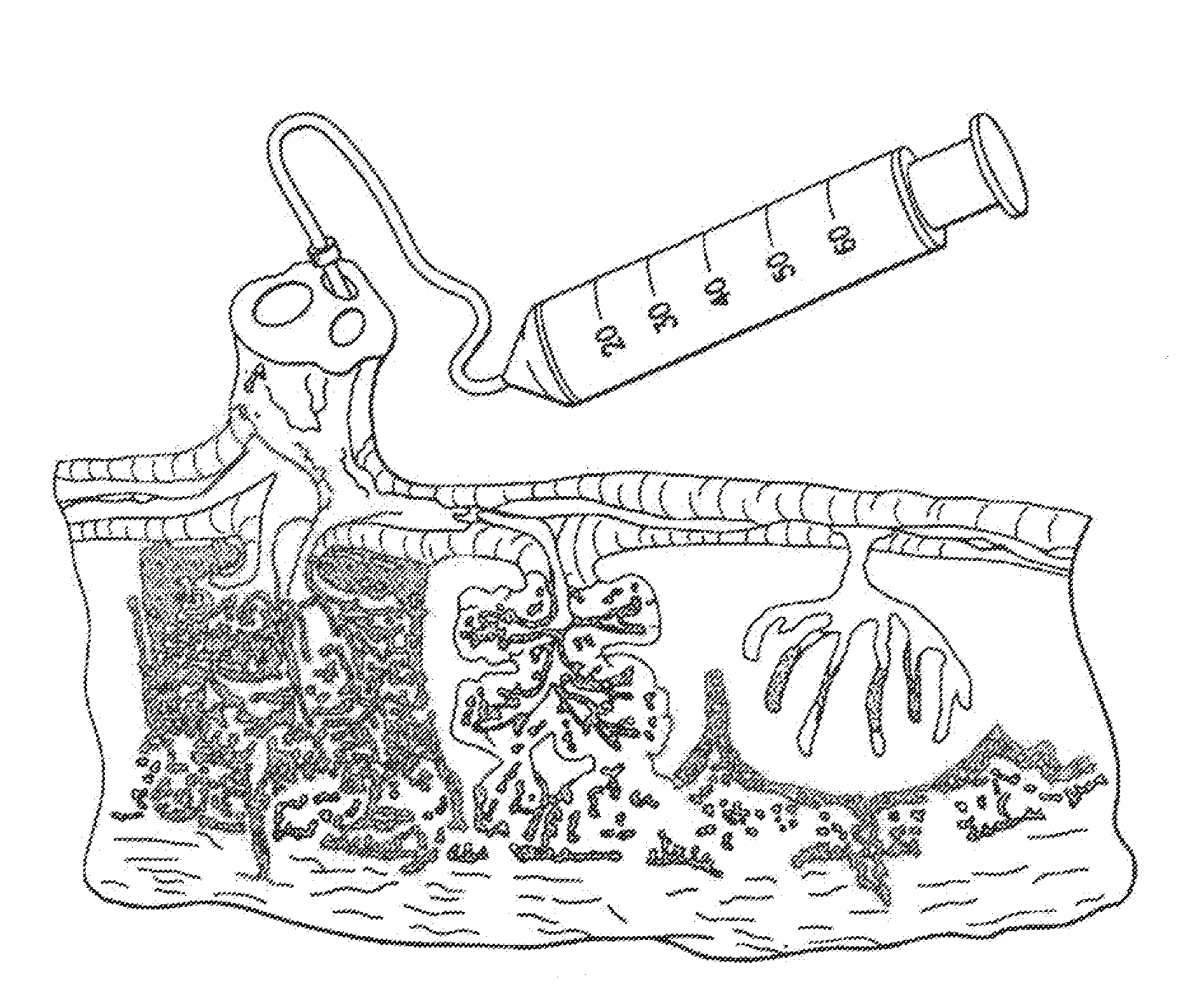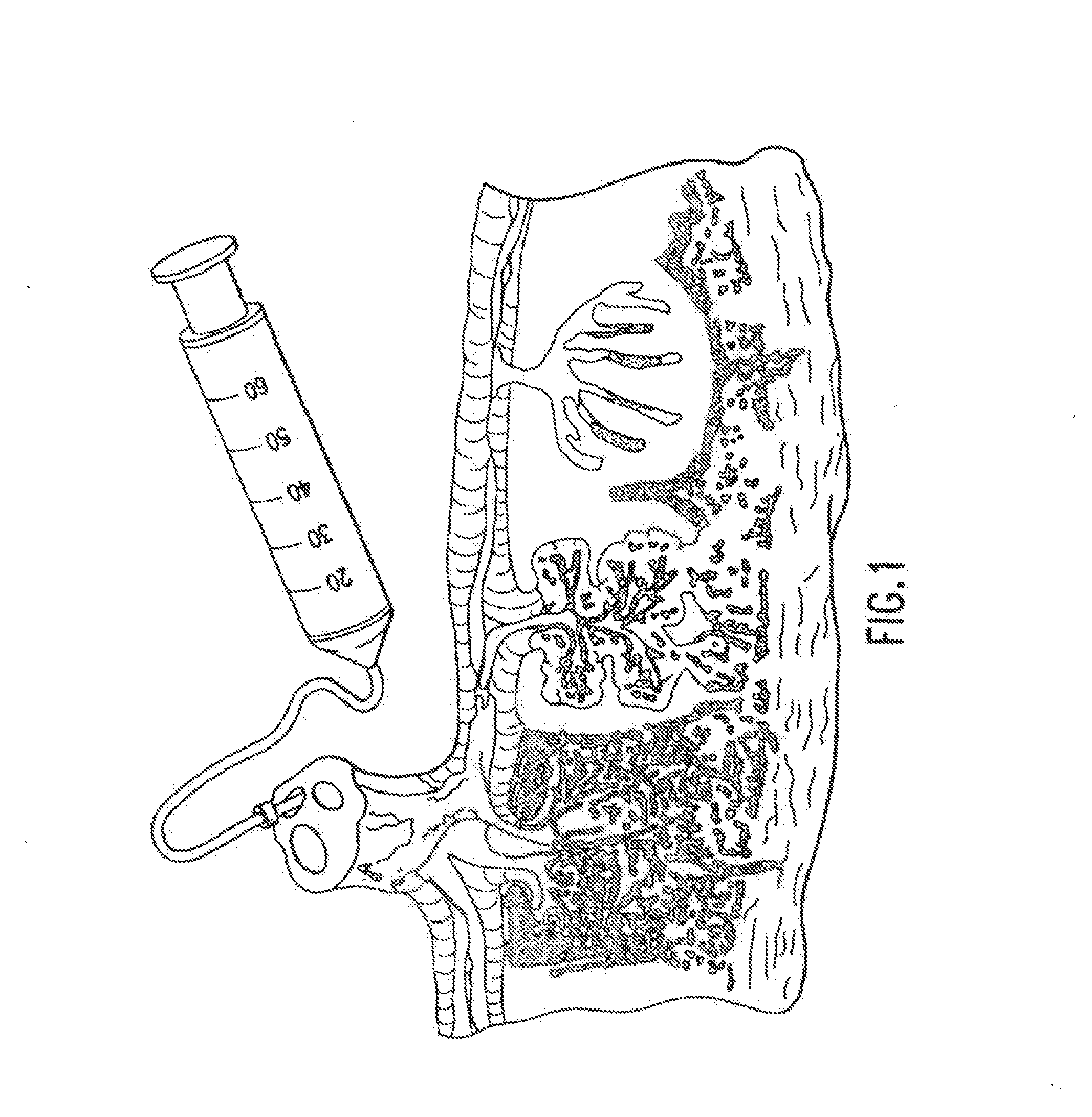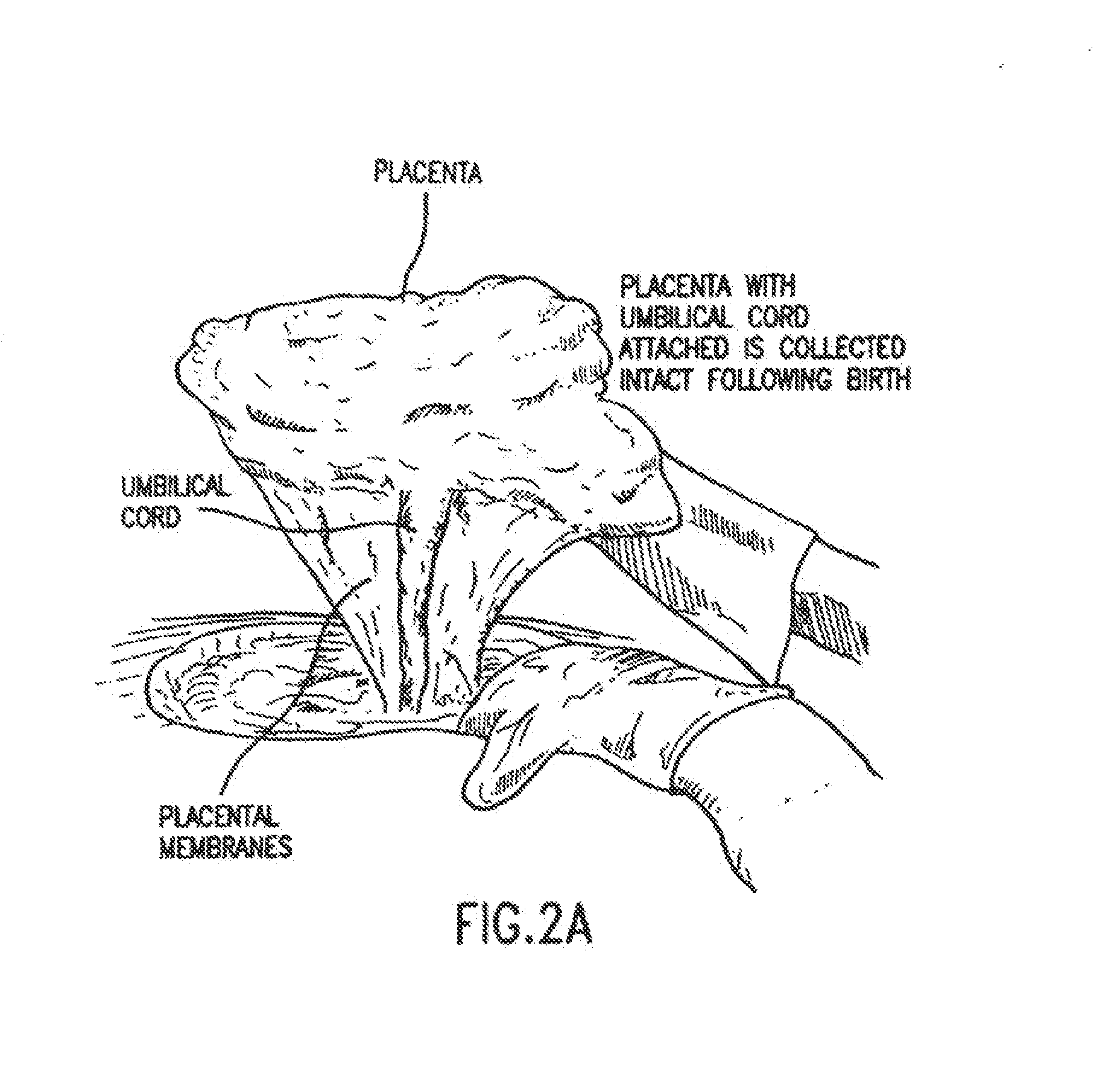Treatment of premature birth complications
a premature birth and complications technology, applied in the field of premature birth complications, can solve the problems of incomplete organ development, no treatment options, etc., and achieve the effect of facilitating the formation of one or more embryoid-like cells and facilitating the formation of one or mor
- Summary
- Abstract
- Description
- Claims
- Application Information
AI Technical Summary
Benefits of technology
Problems solved by technology
Method used
Image
Examples
example 1
6.1 Example 1
Collection of Umbilical Cord Blood and Placental Stem Cells
[0146]This example illustrates the collection of umbilical cord blood and placental stem cells.
[0147]6.1.1 Collection of Umbilical Cord Blood
[0148]Umbilical cord blood is collected using an umbilical cord blood collection kit such as described in U.S. Pat. Application Publication No. 2006 / 0060494, entitled “Cord Blood Collection Kit and Methods of Use Therefor,” the contents of which are incorporated by reference in their entirety.
[0149]Collection kits, containing standard chucks, sterile gauze pad, povidine iodine swabs, sterile alcohol pads, plastic umbilical cord blood clamps, slide clip or hemostat clamps and leak proof resealable bags or canisters are used.
[0150]The collection can be performed before the placenta is delivered (in utero collection), after the placenta is delivered (ex utero collection) or during a C-section, prior to delivery of placenta.
[0151]Briefly, the venipuncture site on the distal sit...
example 2
6.2 Example 2
Treatment of Premature Infants with Umbilical Cord Blood and Placental Stem Cells
[0166]Six premature infants born at gestational age of between 23 weeks to 36 weeks exhibiting Respiratory Distress Syndrome (RDS) or Acute Respiratory Distress Syndrome (ARDS), anemia, intraventricular hemorrhage, necrotizing enterocolitis, retinopathy of prematurity, chronic lung disease (bronchopulmonary dysplasia), an infection, patent ductus arteriosus, apnea, low blood pressure, hyperbilirubinemia, incomplete development of lung, eye, immune system, brain, heart, liver or kidney are treated with umbilical cord blood and placental stem cells.
[0167]Umbilical cord blood is collected as described in Example 1 and placental stem cells are obtained by perfusion or by enzymatic digestion, as described in U.S. Patent Application Publication No. 2007 / 0275362, filed Dec. 26, 2006, the disclosure of which is hereby incorporated by reference. Umbilical cord blood and placental stem cells are comb...
example 3
6.3 Example 3
Characterization of Cells from Cord Blood and Placental Perfusate
[0169]The following experiments were performed to demonstrate the feasibility of producing a combined HPP and UCB from preterm placenta and to determine the cellular composition of the combined product as compared to cell isolated from term placenta.
[0170]Overall results show that (1) It is feasible to collect HPP and UCB from preterm placenta; (2) the total nuclear cell isolated from preterm placenta is comparable to that isolated from term placenta; (3) The TNC content of HPP / UCB isolated from preterm placenta is significantly higher than that shown in term placenta when normalized to similar weight; (4) the cellular composition of umbilical cord blood cells isolated from preterm placenta is different than that of term placenta; CD38+ CD45+ cells are statistically significantly higher in term placenta compared to preterm placenta (p-value of 0.0146), while CD38− CD45− cells are statistically significantl...
PUM
| Property | Measurement | Unit |
|---|---|---|
| birth weight | aaaaa | aaaaa |
| birth weight | aaaaa | aaaaa |
| volume | aaaaa | aaaaa |
Abstract
Description
Claims
Application Information
 Login to View More
Login to View More - R&D
- Intellectual Property
- Life Sciences
- Materials
- Tech Scout
- Unparalleled Data Quality
- Higher Quality Content
- 60% Fewer Hallucinations
Browse by: Latest US Patents, China's latest patents, Technical Efficacy Thesaurus, Application Domain, Technology Topic, Popular Technical Reports.
© 2025 PatSnap. All rights reserved.Legal|Privacy policy|Modern Slavery Act Transparency Statement|Sitemap|About US| Contact US: help@patsnap.com



